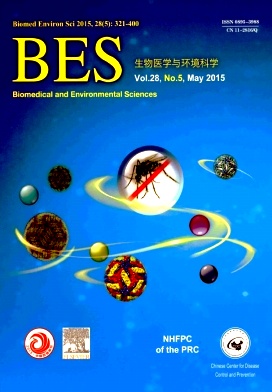The Impacts of Mosquito Density and Meteorological Factors on Dengue Fever Epidemics in Guangzhou, China, 2006-2014:a Time-series Analysis
doi: 10.3967/bes2015.046
-
Key words:
- Breteau index /
- Dengue fever /
- Meteorological factors /
- Negative binomial regression model
Abstract: Objective To explore the associations between the monthly number of dengue fever(DF) cases and possible risk factors in Guangzhou, a subtropical city of China.
Methods The monthly number of DF cases, Breteau Index (BI), and meteorological measures during 2006-2014 recorded in Guangzhou, China, were assessed. A negative binomial regression model was used to evaluate the relationships between BI, meteorological factors, and the monthly number of DF cases.
Results A total of 39,697 DF cases were detected in Guangzhou during the study period. DF incidence presented an obvious seasonal pattern, with most cases occurring from June to November. The current month’s BI, average temperature (Tave), previous month’s minimum temperature (Tmin), and Tave were positively associated with DF incidence. A threshold of 18.25 °C was found in the relationship between the current month’s Tmin and DF incidence.
Conclusion Mosquito density, Tave, and Tmin play a critical role in DF transmission in Guangzhou. These findings could be useful in the development of a DF early warning system and assist in effective control and prevention strategies in the DF epidemic.
| Citation: | SHEN Ji Chuan, LUO Lei, LI Li, JING Qin Long, OU Chun Quan, YANG Zhi Cong, CHEN Xiao Guang. The Impacts of Mosquito Density and Meteorological Factors on Dengue Fever Epidemics in Guangzhou, China, 2006-2014:a Time-series Analysis[J]. Biomedical and Environmental Sciences, 2015, 28(5): 321-329. doi: 10.3967/bes2015.046 |







 Quick Links
Quick Links
 DownLoad:
DownLoad: